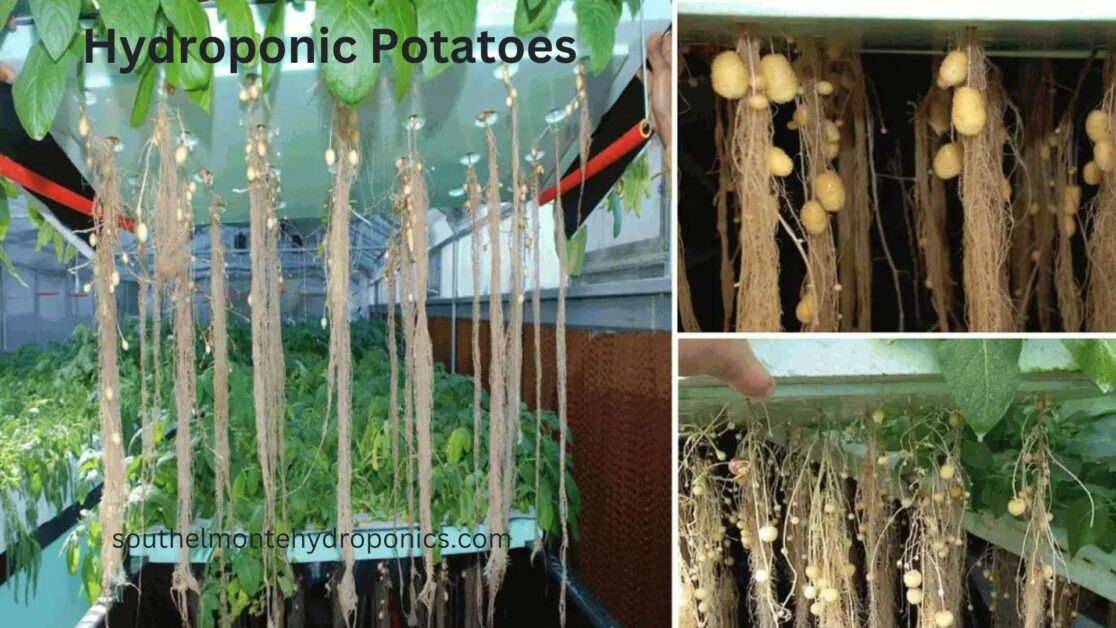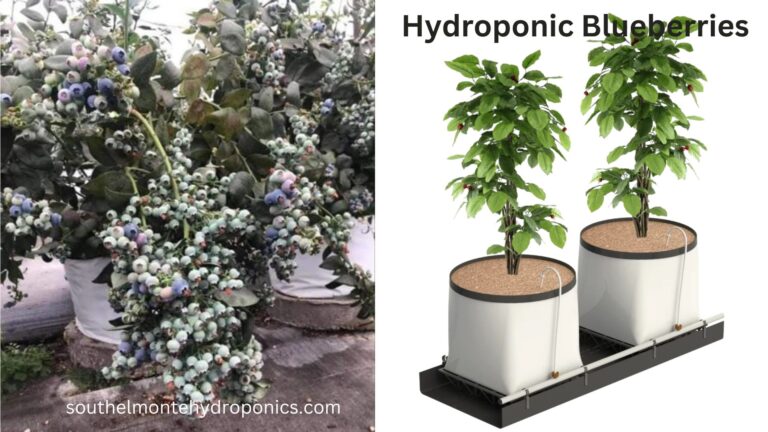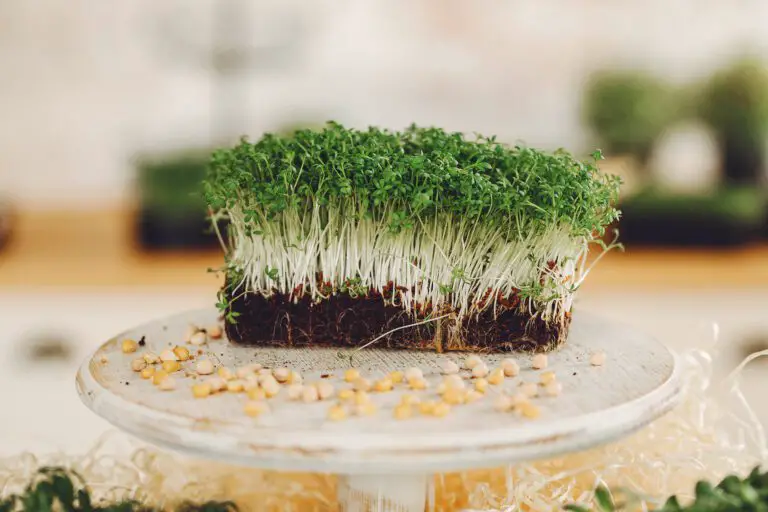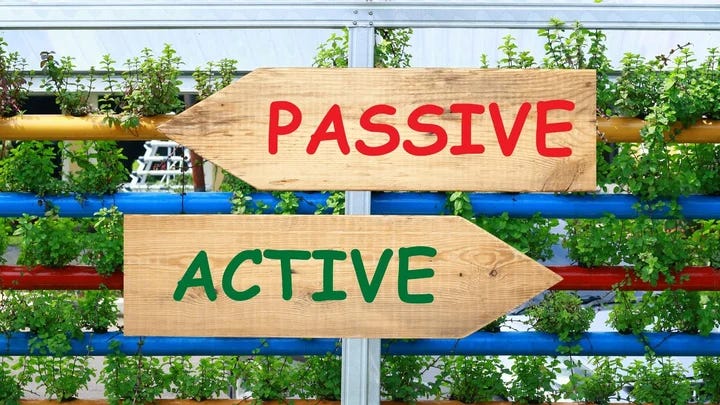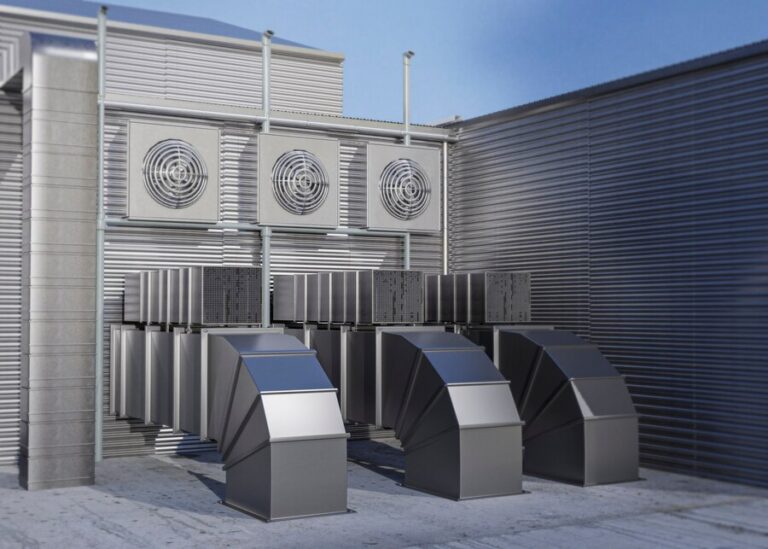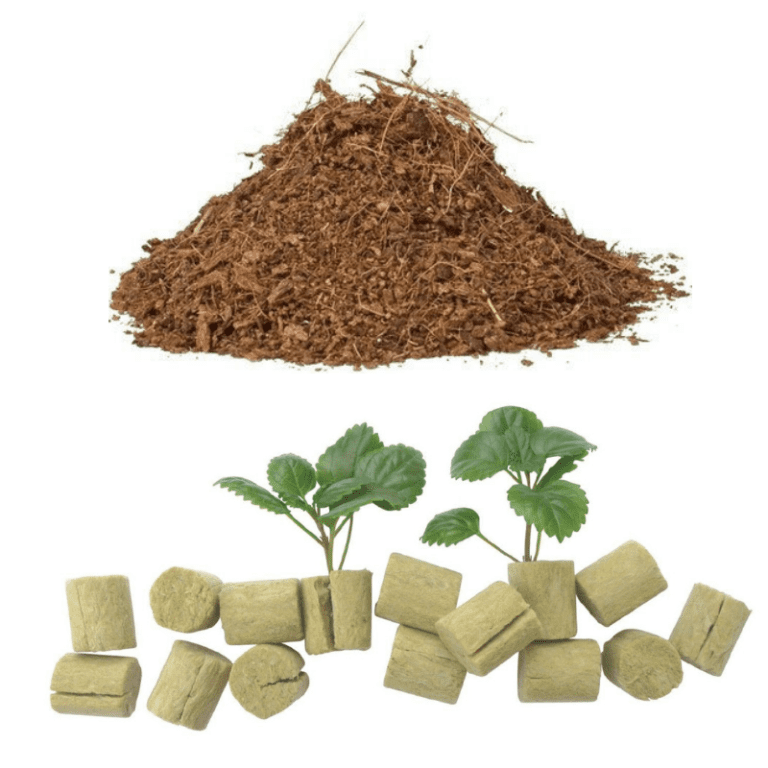Hydroponic Potatoes: Best No. 1 Way to Build Your Harvest Store For Potatoes
Table of Contents
Harvesting and Storing Hydroponic Potatoes: A Comprehensive Guide
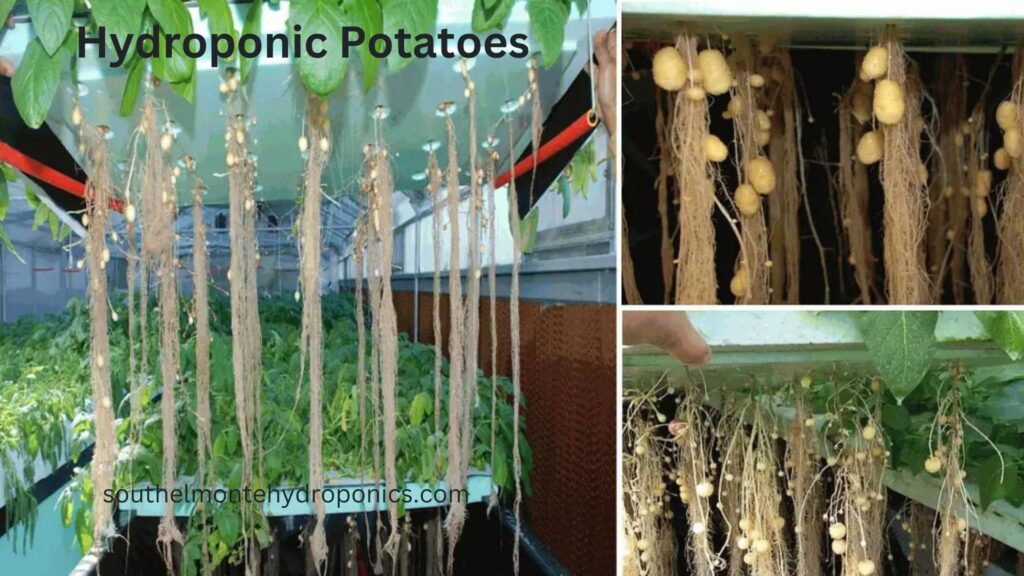
Understanding the Growth Cycle: Exploring the different stages of potato growth in a hydroponic system
In order to successfully harvest and store hydroponic potatoes, it is crucial to have a comprehensive understanding of their growth cycle. The growth cycle of potatoes in a hydroponic system consists of several distinct stages, each requiring specific care and attention.
The first stage is the planting phase, where potato seedlings are transplanted into the hydroponic system. During this stage, the seedlings require adequate water, nutrients, and controlled temperature and lighting conditions to establish healthy root systems. Once the seedlings have developed roots, they enter the vegetative phase, characterized by rapid foliage growth. It is essential to monitor the nutrient levels and provide sufficient support for the growing plants during this stage.
Next, the plants progress to the flowering stage, where they produce beautiful and delicate blossoms. This is a critical period as it signifies the potatoes’ development beneath the surface. It is advisable to facilitate pollination and ensure optimal nutrient availability during this stage. Finally, the plants enter the tuberization stage, where the potatoes begin to form and mature. Careful monitoring of environmental conditions and nutrient levels is essential during this stage to promote healthy tuber growth.
Identifying the optimal time for harvest requires careful observation of plant maturity, as well as an understanding of specific potato varieties. Harvesting potatoes too early may result in underdeveloped tubers, while delaying the harvest could lead to larger tubers with diminished quality. Properly assessing the plant’s growth and the development of tubers is crucial to ensure maximum yield and quality. Stay tuned to discover the precise techniques for harvesting and storing hydroponic potatoes in the following sections of this comprehensive guide.
1. Understanding the Growth Cycle: Exploring the different stages of potato growth in a hydroponic system
Potatoes are a versatile and nutritious crop that can be grown successfully in hydroponic systems. Understanding the growth cycle of potatoes is crucial for maximizing their yield and quality. In a hydroponic system, the growth cycle of potatoes generally consists of four stages: sprouting, vegetative growth, tuber formation, and maturation.
During the sprouting stage, potatoes begin to develop shoots from the eyes. This is usually initiated by maintaining the potatoes at a temperature of around 50 to 60 degrees Fahrenheit (10 to 15 degrees Celsius) for a few weeks. Once the sprouts have grown to a suitable length, they are ready to be planted in the hydroponic system.
In the vegetative growth stage, the planted potatoes focus on establishing a strong root system and developing foliage. Adequate nutrition, provided through a balanced hydroponic nutrient solution, is essential during this stage to support healthy leaf growth. To promote the vegetative growth stage, it is important to maintain a temperature range between 65 and 75 degrees Fahrenheit (18 to 24 degrees Celsius) and provide sufficient lighting.
Tuber formation is the next stage in the growth cycle when the potatoes start to develop underground. This occurs approximately 5 to 6 weeks after planting. At this point, the potato plants should receive more phosphorus and potassium in their nutrient solution to encourage tuber development. It is also critical to provide consistent lighting and maintain the temperature range between 60 and 70 degrees Fahrenheit (15 to 21 degrees Celsius) to optimize tuber growth.
Finally, during the maturation stage, the potatoes reach their full size, and the plant undergoes senescence, or natural deterioration. The duration of the maturation stage can vary depending on the potato variety, but it typically takes around 10 to 14 weeks from planting to harvest. It is essential to monitor the maturity of the potatoes closely to determine the optimal time for harvest, ensuring they are not harvested too early or left too long in the system.
Understanding the different stages of potato growth in a hydroponic system lays the foundation for successful cultivation. By providing the right conditions and nutrient levels throughout each stage, gardeners can maximize their potato yields and achieve high-quality harvests. In the next section, we will explore how to identify the readiness for potato harvest based on plant maturity.
2. Identifying Readiness for Harvest: Determining the optimal time to harvest hydroponic potatoes based on plant maturity
As a hydroponics enthusiast, it is important to determine the optimal time to harvest your hydroponic potatoes based on their plant maturity. Harvesting too early can result in underdeveloped tubers, while harvesting too late may lead to larger, but potentially overripe potatoes. By closely observing the different stages of potato growth, you can identify the key indicators that signify readiness for harvest.
One of the first signs that potatoes are approaching maturity is the appearance of yellow foliage and withered stems. As the plant matures, the energy and nutrients are redirected from the leaves to the developing tubers underground. By monitoring the foliage color, you can assess whether the plants have reached their full growth potential. Additionally, gently brushing away the soil around the base of the plant can reveal the size and development of the potatoes. Potatoes that have reached the desired size for harvest will have a firm outer skin and a well-formed shape.
Although plant maturity is an important factor in determining harvest readiness, it is equally crucial to consider the specific variety of potatoes being grown. Different potato varieties have varying maturation periods, so it is essential to consult the information provided by the seed supplier or conduct research on the typical maturation times for your chosen variety. By combining your observations of plant maturity with the specific guidelines for your potato variety, you can accurately determine the optimal time to harvest your hydroponic potatoes, ensuring maximum yield and quality.
3. Preparing for Harvest: Gathering the necessary tools and supplies for a successful potato harvest
Preparing for the harvest of hydroponic potatoes requires gathering the necessary tools and supplies to ensure a successful and efficient process. Having the right equipment at hand will not only facilitate the harvesting process but also ensure that the potatoes are handled with care to prevent damage. Here are some essential tools and supplies that every hydroponic potato farmer should have:
1. Harvesting knife or gardening shears: A sharp and sturdy knife or a pair of gardening shears is necessary to cut the potato plants at their base, separating them from the hydroponic system. This tool should be sharp enough to make clean cuts and minimize plant damage.
2. Harvesting container or basket: Having a designated container or basket to collect the harvested potatoes is crucial for keeping them organized and protecting them from bruising or excessive handling. Choose a container that is spacious, lightweight, and easy to carry.
3. Gloves: Wearing gloves during the harvesting process is recommended to prevent the transfer of unwanted substances from your hands to the potatoes. Additionally, gloves provide a layer of protection against any sharp objects that may be encountered during the harvest, such as thorns or spines from other plants.
4. Brush or soft cloth: A brush or soft cloth is useful for gently removing any soil or debris from the harvested potatoes. This step is important to maintain the cleanliness and quality of the potatoes, especially if they will be stored for an extended period.
5. Labels or markers: Keeping track of different potato varieties or planting dates is essential for future reference. Use labels or markers to indicate important information on each harvested batch, such as the variety name, date of harvest, or specific characteristics.
By gathering these necessary tools and supplies beforehand, hydroponic potato growers can ensure a smooth and efficient harvest, leading to high-quality potatoes that can be enjoyed for months to come.
4. Harvesting Techniques: Step-by-step instructions on how to carefully remove potatoes from the hydroponic system
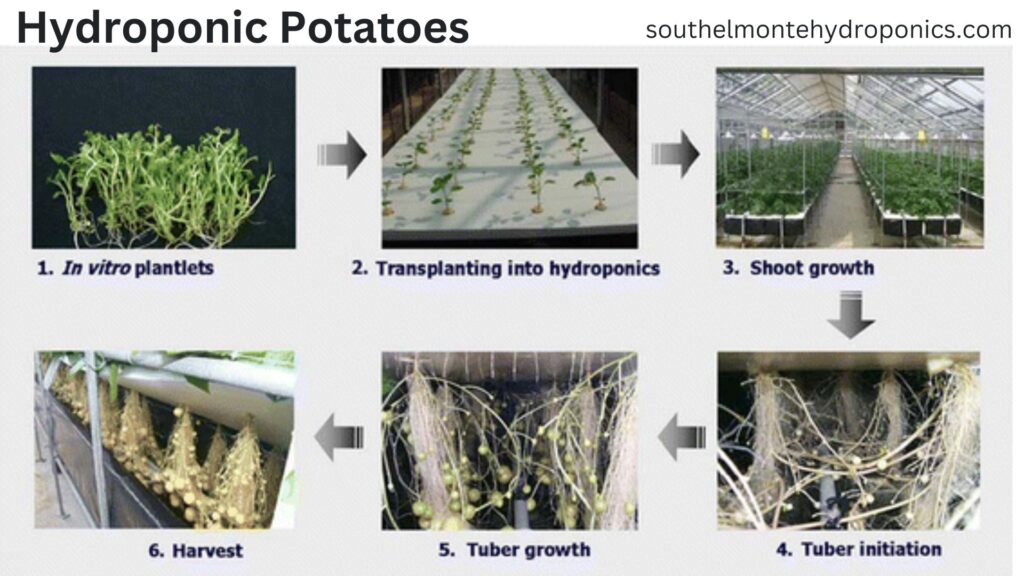
Harvesting Techniques: Step-by-step instructions on how to carefully remove potatoes from the hydroponic system
Once your hydroponic potato plants have reached their desired level of maturity, it is crucial to handle the harvesting process with utmost care to ensure the quality and preservation of your harvest. Follow these step-by-step instructions to carefully remove the potatoes from the hydroponic system.
1. Preparation: Before starting the harvesting process, gather all the necessary tools and supplies. These may include a clean and sharp garden knife or pruners, a shallow container or basket to collect the potatoes, and gloves to protect your hands.
2. Loosening the Roots: Gently loosen the roots surrounding the potato plants. This can be done by carefully lifting the plants from their growth medium. Avoid pulling or tugging too hard on the plants, as this can cause damage and affect the quality of the potatoes.
3. Removing Excess Soil: Once the plants are lifted, gently shake off any excess soil clinging to the roots. Be cautious not to damage the fragile tubers growing from the stems.
4. Assessing Tuber Maturity: Carefully inspect each plant to determine the maturity of the potatoes. Potatoes are ready to be harvested when the skins are firm, and the tubers have reached the desired size. Immature potatoes may still be small and lack the desired taste and texture.
5. Cutting the Stem: With a clean and sharp garden knife or pruners, cut the stem just above the tuber. Be careful not to damage the tuber while cutting. Remove the stem completely to avoid any potential rot or disease that may impact the harvested potatoes.
6. Collecting the Potatoes: As you cut each stem, gently lift the potato from the growth medium using your hand or a garden tool. Place the harvest into a shallow container or basket, being cautious not to bruise or damage the potatoes. Repeat this process for each remaining plant.
By following these step-by-step instructions, you can ensure a successful and careful potato harvesting process in your hydroponic system. The next steps of handling and cleaning are equally important in maintaining the quality and longevity of your harvest. Stay tuned for the upcoming section on how to properly handle and clean harvested potatoes.
5. Handling and Cleaning: Properly handling and cleaning harvested potatoes to ensure their quality and longevity
Proper handling and cleaning of harvested potatoes play a crucial role in ensuring their quality and longevity. Once the potatoes have been carefully removed from the hydroponic system using the appropriate harvesting techniques, it is important to handle them with care to avoid bruising or damaging the tubers. Gently place the potatoes into a clean container, taking care not to drop or stack them too high, as excessive pressure can lead to bruising.
To clean the harvested potatoes, start by rinsing them under cool, running water. This helps remove any dirt or debris that may be clinging to the surface. Avoid using soap or any harsh cleaning agents, as they can alter the taste and quality of the potatoes. A soft-bristled brush can be used to gently scrub away stubborn dirt, but be careful not to scrub too vigorously as this can cause damage. Once clean, allow the potatoes to air dry thoroughly before proceeding to the next stage of sorting and grading.
6. Sorting and Grading: Sorting potatoes based on size and quality to separate them for storage purposes
Sorting and grading potatoes is an essential step in the harvesting process as it allows for the separation of potatoes based on their size and quality, ensuring optimal storage conditions. When sorting hydroponic potatoes, it is important to consider both the physical characteristics of the potatoes and any signs of damage or disease that may affect their quality.
Size is an important factor to consider during sorting, as it influences the cooking time and overall appeal of the potatoes. Larger potatoes are often preferred for baking or mashing, while smaller ones are ideal for boiling or roasting. By sorting potatoes based on size, gardeners can easily match them to their intended culinary use.
Quality is another crucial aspect to assess during the sorting process. Potatoes that display signs of bruising, rot, or disease should be removed to prevent the spread of pathogens to healthy potatoes. A careful inspection of each potato is necessary to ensure that only the highest quality ones make their way to storage. By separating potatoes based on size and quality, gardeners can effectively organize their harvest and optimize the storage conditions for each batch.
Overall, sorting and grading hydroponic potatoes based on size and quality is a crucial step in the harvesting process. By carefully inspecting each potato and separating them according to their characteristics, gardeners can ensure that only the best potatoes are stored, preserving their quality and extending their shelf life.
7. Curing Process: Understanding the importance of curing potatoes and the ideal conditions for this process
Curing potatoes is a crucial step in the harvesting and storing process that should not be overlooked. This process allows the potatoes to develop a protective layer on their skin, extending their shelf life and enhancing their flavor. During curing, the skin of the potatoes thickens and toughens, making them less susceptible to bruising and damage during storage. Additionally, the curing process helps to convert starches in potatoes into sugars, resulting in a sweeter taste when cooked.
To successfully cure potatoes, it is important to create the ideal conditions. This includes maintaining a temperature of around 50-60°F (10-15°C) and a relative humidity of 85-95%. These conditions should be maintained for a period of 1-2 weeks, allowing the potatoes to fully undergo the curing process. It is important to note that curing should be done in a dark and well-ventilated area to prevent greening and the growth of mold on the potatoes’ skin. By ensuring the potatoes are properly cured, you can maximize their storage life and enjoy their delicious flavor year-round.
8. Drying and Ventilation: Providing adequate airflow and ventilation during the drying phase to prevent rotting or mold growth
To ensure the quality and longevity of hydroponically grown potatoes, proper drying and ventilation techniques are essential during the post-harvest phase. Adequate airflow and ventilation play a crucial role in preventing rotting and mold growth, which can significantly impact the storage lifespan of harvested potatoes.
During the drying phase, it is important to allow the potatoes to dry naturally and gradually before storing them. This can be achieved by spreading them out in a single layer on a clean and dry surface, such as a wire rack or a cloth-lined table. Avoid stacking the potatoes or placing them in enclosed spaces, as it can restrict airflow and lead to moisture buildup, increasing the risk of spoilage.
To facilitate proper ventilation, it is recommended to place the drying area in a well-ventilated space with good air circulation. If necessary, you may consider using fans or opening windows to improve airflow. Additionally, ensure that the drying area is free from excessive humidity, as high moisture levels can create a favorable environment for mold and bacterial growth. By providing adequate airflow and ventilation during the drying phase, you can significantly reduce the risk of rotting and mold formation, thus extending the shelf life of your hydroponic potatoes.
9. Storage Containers: Choosing suitable containers for storing hydroponic potatoes, considering factors such as light exposure and ventilation
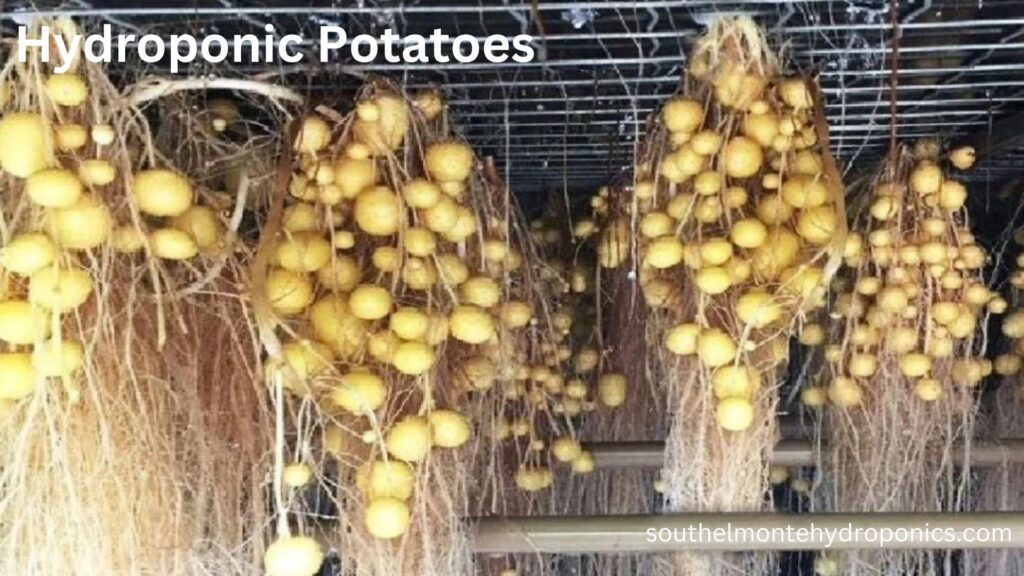
When it comes to storing hydroponic potatoes, choosing suitable containers is crucial to maintain their quality and prevent spoilage. Several factors need to be considered, such as light exposure and ventilation, in order to create the ideal storage environment.
Firstly, it’s important to select containers that are opaque or made of materials that do not allow light to penetrate. Exposure to light can cause potatoes to develop a green color and produce a bitter taste. Therefore, using bins or containers with solid walls or covering them with a dark cloth or paper will prevent the potatoes from being exposed to light and ensure their flavor is preserved.
Secondly, ventilation is key to avoiding moisture buildup that can lead to rotting or mold growth. Opt for containers with perforations or ventilation holes to allow air circulation and reduce the risk of potato spoilage. These perforations or holes should be small enough to prevent pests from entering while still facilitating adequate airflow. Additionally, placing the containers in a well-ventilated area will further aid in maintaining the freshness of the potatoes.
Overall, selecting the right storage containers for hydroponic potatoes involves considering factors like light exposure and ventilation. By choosing opaque containers and providing proper ventilation, gardeners can ensure their harvested potatoes stay fresh, flavorful, and free from moisture-related issues. In the next section, we will explore the ideal storage conditions for long-term preservation of hydroponic potatoes.
10. Ideal Storage Conditions: Creating the perfect environment for long-term potato storage, including temperature and humidity levels
To ensure the long-term storage of hydroponic potatoes, it is crucial to create an environment that maintains ideal temperature and humidity levels. Potatoes should be stored in a cool, dark location with a temperature ranging between 45°F and 50°F (7°C and 10°C). This temperature range helps prevent sprouting and slows down the rate of decay. Higher temperatures can result in quick deterioration and a higher risk of rotting, while lower temperatures can cause potatoes to develop a sweet taste and increase the likelihood of starch conversion.
Humidity levels also play a significant role in potato storage. The ideal humidity range for long-term potato storage is around 85% to 95%. High humidity helps retain the natural moisture of the potatoes and prevents them from drying out. However, excessive moisture can lead to the growth of mold and bacteria, so it is essential to monitor humidity levels regularly and make adjustments as needed. Proper ventilation is crucial to prevent the buildup of excess moisture and maintain optimal humidity levels in the storage area.
11. Monitoring and Maintenance: Regularly checking stored potatoes for signs
Regular monitoring and maintenance are crucial for ensuring the quality and longevity of stored hydroponic potatoes. By taking the time to regularly check the potatoes, you can identify any signs of spoilage or decay early on, allowing you to take necessary steps to prevent further damage.
During your monitoring sessions, it is important to inspect each potato individually for any visible signs of deterioration. Look for soft spots, mold growth, or discoloration, as these are indicators that the potato may not be suitable for consumption or long-term storage. In addition to visual cues, pay attention to any unusual odors, as a strong or unpleasant smell can also be a sign of spoilage. By being vigilant in your inspections, you can identify and remove any potatoes that may be compromised, thus preserving the quality of the remaining crop.
To further ensure the optimal condition of your stored potatoes, it is recommended to regularly adjust the storage environment as needed. Factors such as temperature and humidity levels can greatly impact the longevity of potatoes. Monitoring and maintaining these conditions will help prevent issues like sprouting or rotting. Additionally, it is advisable to periodically inspect the storage containers for any signs of damage or deterioration that could compromise the potatoes’ quality. By taking these proactive measures, you can minimize the risk of spoilage and enjoy your hydroponic potatoes for an extended period of time.
How often should be stored Hydroponic Potatoes be checked for signs of spoilage?
Stored potatoes should be checked regularly for signs of spoilage, ideally at least once every two weeks.
What are some common signs of spoilage to look out for in stored Hydroponic Potatoes?
Common signs of spoilage in stored potatoes include softening, sprouting, mold growth, and off-putting odors.
What should I do if I find spoiled Hydroponic Potatoes during a routine check?
If you find spoiled potatoes during a routine check, it is important to remove them immediately to prevent the spread of rot to other potatoes.
How can I prevent spoilage in stored Hydroponic Potatoes?
To prevent spoilage in stored potatoes, ensure that they are stored in a cool, dark, and well-ventilated area with proper humidity levels. Regularly inspect the potatoes and remove any that show signs of spoilage.
Are there any specific temperature and humidity levels that should be maintained during potato storage?
Yes, the ideal temperature for potato storage is around 45-50°F (7-10°C) with a humidity level of approximately 85-95%.
Can I store hydroponic potatoes together with other vegetables or fruits?
It is generally recommended to store hydroponic potatoes separately from other vegetables or fruits, as they have different storage requirements and can affect each other’s ripening process.
How long can hydroponic potatoes be stored for?
With proper storage conditions, hydroponic potatoes can be stored for several months, typically up to 6-8 months.
Is it necessary to wash stored potatoes before consumption?
It is generally advisable to wash stored potatoes before consumption to remove any dirt or debris that may have accumulated during storage.
Can stored potatoes be used for planting new crops?
Yes, stored potatoes can be used for planting new crops. However, it is important to select healthy, disease-free potatoes for this purpose.
Are there any natural methods to prevent potato spoilage during storage?
Yes, using natural remedies such as storing potatoes with apple slices or placing dried herbs like rosemary or thyme in the storage area can help prevent potato spoilage.

